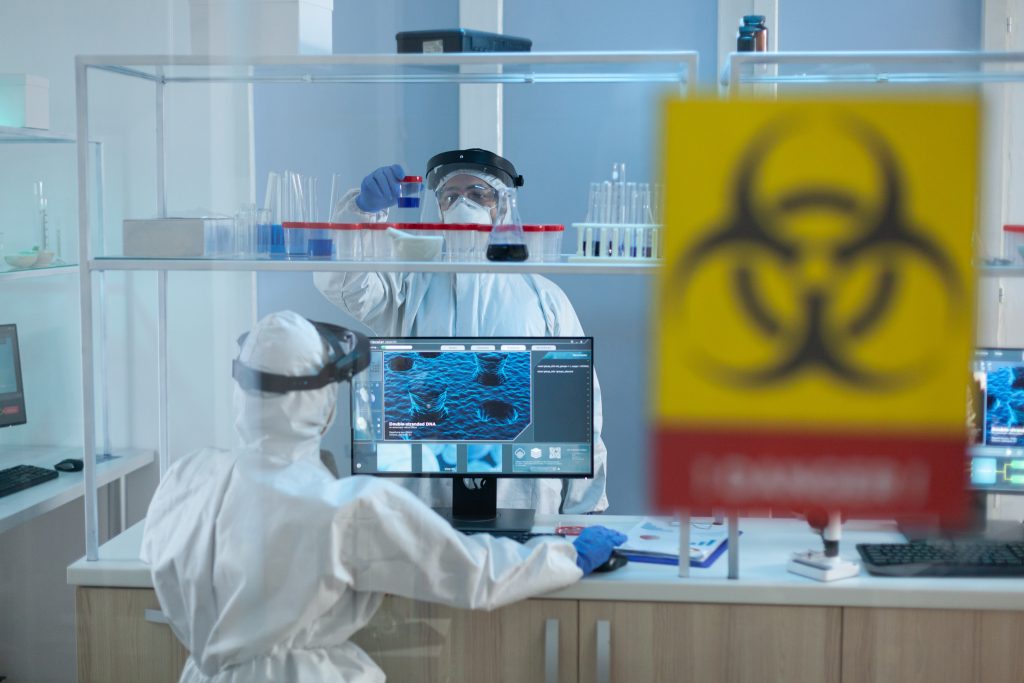Are you concerned about the safety of Japanese nuclear facilities? Rest assured, extensive safety measures and precautions are implemented to protect neighboring communities and prevent any adverse impacts on their health. These facilities are designed to prevent abnormal incidents and the potential spread of radioactive materials. Redundant safety measures are in place to ensure the safety of residential areas surrounding the plants. Aseismic measures are also implemented to maintain the stability and structural integrity during seismic events. Continuous environmental radiation monitoring confirms that there is no harmful effect on the surrounding environment. In this article, we will explore the safety assurance measures introduced after the Fukushima Daiichi accident, as well as the ongoing efforts to evaluate and improve safety standards. Join us as we delve into the laws, regulations, and instruments used to maintain radiation safety in these facilities.
General Safety Measures
To ensure the safety of neighboring communities and prevent adverse impacts on their health, multiple safety measures are implemented at Japanese nuclear power plants. Emergency response is a critical aspect of these measures, with well-defined procedures in place to handle any potential emergencies. This includes the establishment of emergency response centers and the training of staff to effectively respond to various scenarios. Community engagement is also prioritized, with regular communication and information sharing to address any concerns and ensure transparency.
Worker safety is of utmost importance, with stringent protocols in place to protect the health and well-being of employees. This includes the use of personal protective equipment, regular health check-ups, and training programs to enhance awareness and understanding of potential hazards.
Proper disposal of nuclear waste is another crucial safety measure. Strict regulations and guidelines are followed to ensure the safe handling and storage of radioactive materials. Emergency drills are conducted regularly to test the effectiveness of these safety measures and identify areas for improvement.
Aseismic Measures
How are aseismic measures implemented to ensure the stability and structural integrity of Japanese nuclear power plants during seismic events? Aseismic measures are essential safety measures that are implemented to protect nuclear power plants and nearby communities from the destructive forces of earthquakes. These measures are carefully designed and implemented to prevent damage to the plant and ensure the safety of the surrounding environment. Here are four key ways in which aseismic measures are implemented:
- Advanced Engineering Techniques: Japanese nuclear power plants employ advanced engineering techniques, such as base isolation systems and reinforced structures, to minimize the impact of seismic events. Base isolation systems help to absorb and dissipate the energy generated by an earthquake, reducing the stress on the structure of the plant.
- Rigorous Design and Construction Standards: Stringent design and construction standards are followed to ensure the structural integrity of nuclear power plants. These standards include using robust materials and construction methods that can withstand the forces exerted by seismic events.
- Regular Inspections and Maintenance: Nuclear power plants undergo regular inspections and maintenance to identify and address any potential vulnerabilities related to seismic events. This proactive approach helps to ensure that the plant remains resilient and capable of withstanding earthquakes.
- Seismic Monitoring and Emergency Preparedness: Continuous seismic monitoring systems are in place to detect and assess seismic activity in the vicinity of nuclear power plants. This information is used to update emergency response plans and ensure that appropriate measures are taken to protect the plant and nearby communities in the event of an earthquake.
Environmental Radiation Monitoring
By continuously monitoring environmental radiation and conducting regular sample analysis, Japanese nuclear operators ensure that there are no harmful effects on the surrounding environment. Enhancing monitoring techniques is crucial in ensuring public safety and preventing radiation exposure. Japanese nuclear facilities employ various monitoring systems to assess the environmental impact of their operations. Local governments and utilities independently measure radiation dose in the air using radiation monitoring systems. Additionally, samples of seawater, soil, agricultural products, and sea products are periodically collected and analyzed for radioactive material content. This comprehensive approach ensures that any potential release of radioactive materials is promptly detected and mitigated.
Furthermore, effective health risk communication plays a vital role in environmental radiation monitoring. Japanese nuclear operators prioritize transparent and timely communication with the public regarding potential risks and safety measures. This fosters public trust and enables individuals to make informed decisions about their own safety. It also allows for the dissemination of accurate information regarding the environmental impact assessment and the steps taken to prevent and mitigate radiation exposure. Through continuous monitoring, analysis, and open communication, Japanese nuclear operators strive to ensure the highest level of safety and protect both the environment and the well-being of the surrounding communities.
Safety Assurance Measures After Fukushima Daiichi Accident
After the Fukushima Daiichi accident, safety assurance measures were strengthened at Japanese nuclear facilities. The following measures were implemented to ensure the safety of these facilities:
- Reinforcing tsunami safety: Recognizing the severity of the accident, efforts were made to enhance the safety measures against tsunamis. This involved conducting thorough assessments of tsunami risks and implementing necessary upgrades to mitigate potential impacts.
- Upgrading procedure manuals: To improve operational safety, procedure manuals were updated and enhanced. This included incorporating lessons learned from the Fukushima Daiichi accident and implementing best practices to effectively respond to any abnormal situations or emergencies.
- Conducting drills: Regular drills and training exercises were conducted to ensure that personnel are well-prepared to handle various emergency scenarios. These drills help familiarize the staff with emergency procedures, enhance coordination, and improve response capabilities.
- Installing emergency power supply and constructing coastal levees: Additional emergency power supply units were installed to ensure the availability of backup power in case of a loss of external power. Moreover, coastal levees were constructed to provide a stronger defense against potential tsunamis, further enhancing the safety of the facilities.
These safety assurance measures aim to prevent and mitigate the impact of accidents, ensuring the highest level of safety at Japanese nuclear facilities. Continuous evaluation and improvement of these measures are crucial to maintain and enhance the safety standards in the wake of the Fukushima Daiichi accident.
Evaluation and Improvement
To evaluate and improve the safety measures implemented in Japanese nuclear facilities, continuous efforts are made to ensure the highest level of safety standards. Evaluation methods, such as risk assessment and technical advice, are utilized to identify areas for improvement. Safety improvement activities are then undertaken based on these evaluations and recommendations.
The Japan Nuclear Safety Institute (JANSI) plays a crucial role in the evaluation process. They assess the safety improvement activities of electric power companies and provide technical advice to enhance safety standards. Additionally, the Nuclear Risk Research Center (NRRC) employs Probabilistic Risk Assessment (PRA) to propose solutions through research and development.
Electric power companies in Japan strive to achieve the highest safety level in the world based on these evaluations and recommendations. Their objective is to continuously improve safety standards and ensure the highest level of safety in nuclear power plants.
By regularly evaluating the safety measures implemented after the Fukushima Daiichi accident, the aim is to identify any weaknesses and address them promptly. This ongoing evaluation process is essential in maintaining the safety of nuclear facilities and preventing future accidents.
Through the use of evaluation methods, adherence to safety standards, and the implementation of risk assessment and technical advice, Japanese nuclear facilities are committed to continuous improvement and the highest level of safety.
Laws and Regulations for Radiation Safety and Control
To ensure radiation safety and control in Japanese nuclear facilities, there are several laws and regulations in place. These laws and regulations serve as the foundation for maintaining radiation safety standards and ensuring regulatory compliance. Here are four key aspects of the laws and regulations for radiation safety and control in Japanese nuclear facilities:
- Regulation of Nuclear Source Material, Nuclear Fuel Material and Reactors Act: This act sets the framework for the regulation of nuclear source material, nuclear fuel material, and reactors. It establishes the necessary protocols and procedures for the safe handling and storage of radioactive materials.
- Act concerning Prevention from Radiation Hazards due to Radioisotopes, etc.: This act focuses on the prevention of radiation hazards caused by the use of radioisotopes. It outlines the radiation control measures and radiation safety protocols that must be followed to protect workers and the surrounding environment.
- Industrial Safety and Health Act: This act ensures the safety and health of workers in all industries, including nuclear facilities. It mandates the implementation of radiation safety measures and the provision of training and protective equipment to workers.
- Regulation concerning Prevention from Radiation Hazards due to Ionizing Radiation: This regulation specifically addresses the prevention of radiation hazards due to ionizing radiation. It stipulates the necessary measures and safety standards to be followed in order to minimize the potential risks associated with ionizing radiation.
These radiation safety laws and regulations play a critical role in maintaining the safety and control of radiation in Japanese nuclear facilities. They provide the necessary guidelines and requirements to protect the workers, visitors, and the surrounding environment from the potential hazards of radiation exposure.
Radiation-Measuring Instruments and Survey Meters
Radiation-measuring instruments and survey meters play a crucial role in ensuring the safety and control of radiation levels in Japanese nuclear facilities. These instruments are utilized for radiation measurement techniques, survey meter usage, evaluation methods, safety standards, and regulatory compliance. In Japanese nuclear facilities, various types of radiation-measuring instruments are employed to monitor radioactive concentration and radiation equivalent rate. Dust monitors and gas monitors are used to monitor exhaust air, while area monitors estimate the ambient dose equivalent rate. Additionally, different types of survey meters, such as ionization-chamber-type, Geiger-Mueller (GM)-type, and scintillation-type survey meters, are utilized to evaluate the ambient dose equivalent rate of Y-ray (X-ray) and surface contaminations. Rem counters are used for neutron measurements, and GM-type beta survey meters are used for evaluating beta surface contaminations. These survey meters are selected based on the type of radiation and dose rate. Through the use of radiation-measuring instruments and survey meters, nuclear facilities ensure the highest level of safety, comply with regulatory standards, and protect the well-being of workers and visitors.





